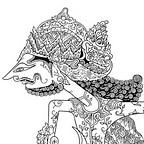The Church of the Transfiguration
A Photo-Essay on The Little Church Around the Corner
The Church of the Transfiguration was founded as a parish by Rev. Dr. George Hendric Houghton (1820–97) in 1848, with the oldest section of its edifice completed in 1850. It has been, and remains, a prominent institution of the Anglo-Catholic movement within The Episcopal Church, a persuasion that places a greater emphasis on the Catholic heritage of Anglican churches. From its inception, the Church has fostered a ministry welcoming toward all races, classes, and backgrounds with a focus on helping the poor and the marginalized.
The Church is built in early English Gothic Revival style and designed to resemble the quaint parishes of the English countryside, with the original architect unknown. Its expansions and additions throughout the years have not been masterplanned, yielding a unique asymmetry of scales and layouts between its constituent sections. This unusual aesthetic led some in the 1860s to refer to it as the “Holy Cucumber Vine,” but its more established nickname, proudly adopted by the Church itself, is The Little Church Around the Corner.
The Church’s nickname originated in 1870 with actor Joseph Jefferson (1829–1905), known for his portrayal of Rip Van Winkle. Jefferson sought a funeral for his friend and fellow actor George Holland (1791–1870), but was rebuffed by William T. Sabine, Rector of the now-defunct Church of the Atonement. As many pastors of the time refused to perform services for actors, Sabine dismissively stated, “I believe there is a little church around the corner where it might be done,” to which Jefferson replied, “Then I say to you, sir, God bless the little church around the corner.”
Dr. Houghton did officiate Holland’s funeral, beginning a longstanding relationship between the Church and the theater. In December 1923, a group of Broadway actors met with Rev. Dr. Randolph Ray (1887–1963), third Rector of the Church, and other trustees to found the Episcopal Actors’ Guild (EAG), which remains headquartered in the Church’s Guild Hall to this day. The EAG provides socio-artistic services to its members and, via scholarships and grants, supports the broader theater community, all on a non-denominational, non-sectarian basis.
Prior to the American Civil War, the Church had already been a stop on the Underground Railroad, sheltering escaped slaves within its basement. Furthermore, it also hosted the first Sunday school for African-Americans in New York City. Its commitment to the marginalized would be further tested in the midst of the Civil War, during what became the largest civil and racially-charged eruption of urban violence in American history.
In July 1863, the New York City Draft Riots erupted, with white rioters, predominantly working-class Irishmen, attacking African-Americans, blaming them for the Draft and the War. Dr. Houghton filled every space in the Church with African-Americans fleeing the violence, boldly confronting rioters with the admonition, “You white devils, you! Do you know nothing of the spirit of Christ?” He further lifted the processional Cross from its place in the Church, holding it in front of the mob outside while declaring, “Stand back, you white devils; in the name of Christ, stand back!”
The Church’s motto from its inception has been Fides Opera, meaning Faith and Works. The exemplary model of ministry set by Dr. George Hendric Houghton is a true testament to the power of the Divine when it is held in both one’s heart and one’s actions. Although the Church’s nickname remains descriptive for its edifice, in terms of faith and works, it has proven to be larger than life, truly more than just The Little Church Around the Corner.
These photos were taken on three nonconsecutive days exclusively utilizing a wide angle lens. With the exception of the cover image, the exterior photos featured were intentionally taken on a single cloudy day, as the large trees and asymmetry of the Church cast problematic shadows for wider shots on sunny days. The tight framing of the St. Mary Chapel was due to this photographer’s shadow being awkwardly cast by the Madonna spotlight from any other angle. As the Main Sanctuary is only open on Sundays, a wide perspective on the Transept was not featured due to it having just been used for the fellowship hour. Acknowledgments and gratitude go to The Reverend John David van Dooren for his warm greetings during photography of the Jefferson Window, to Dave, Millicent, and Bonnie for the pleasant conversations, to NYC Architecture for the convenient historical aggregation, and to Joan Seymour for the informative tour and graciously reviewing the draft of this photo-essay.
